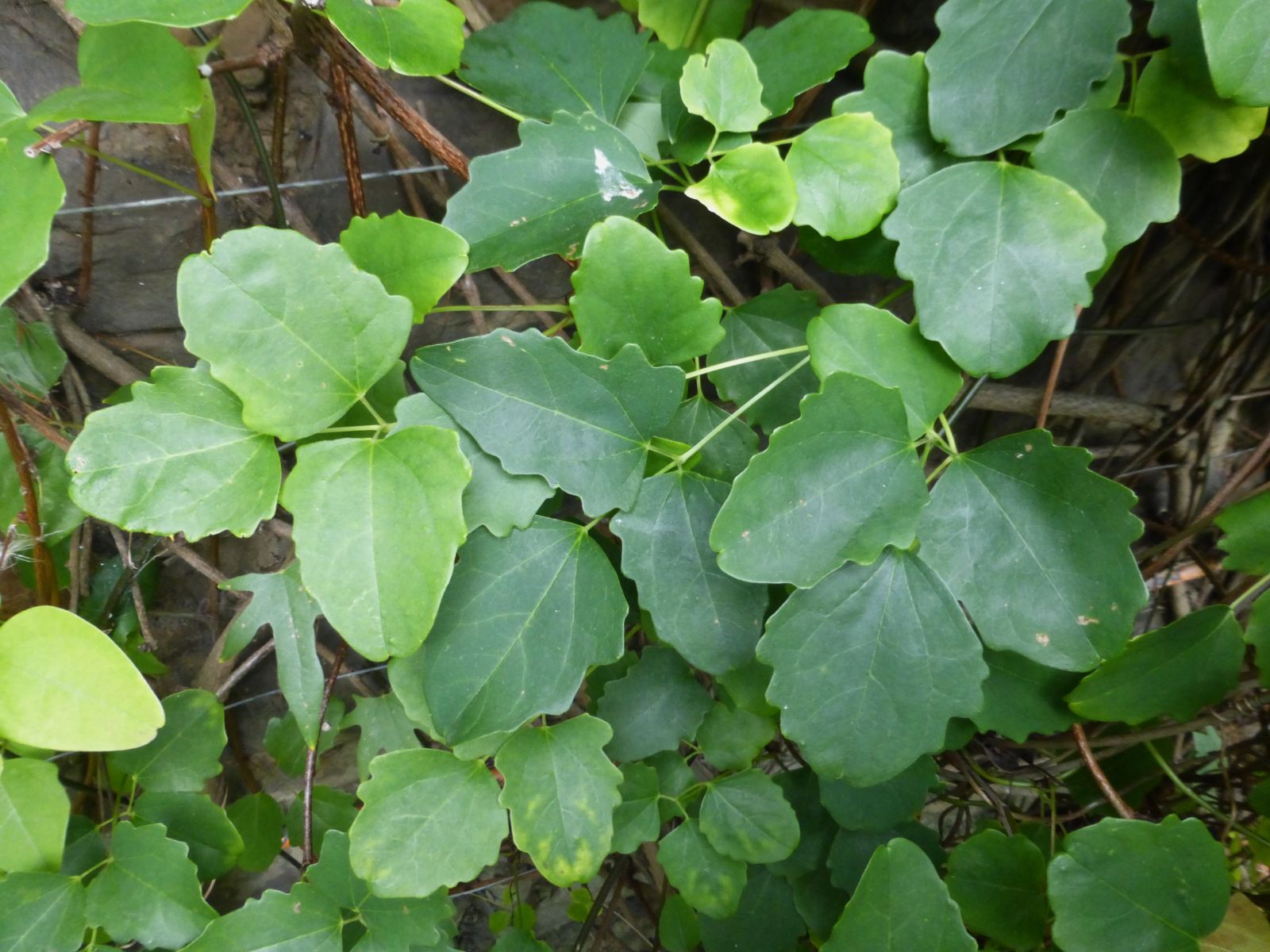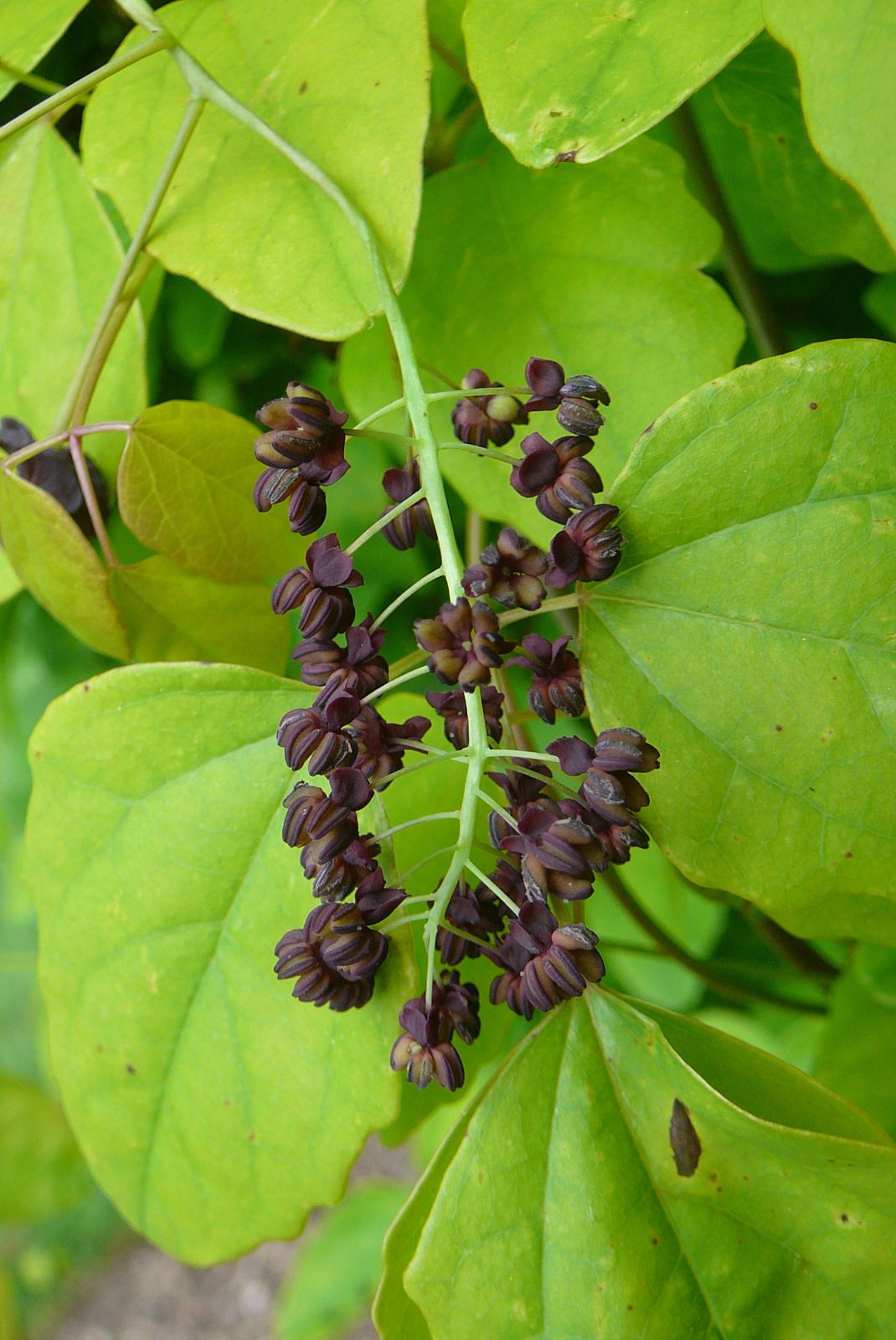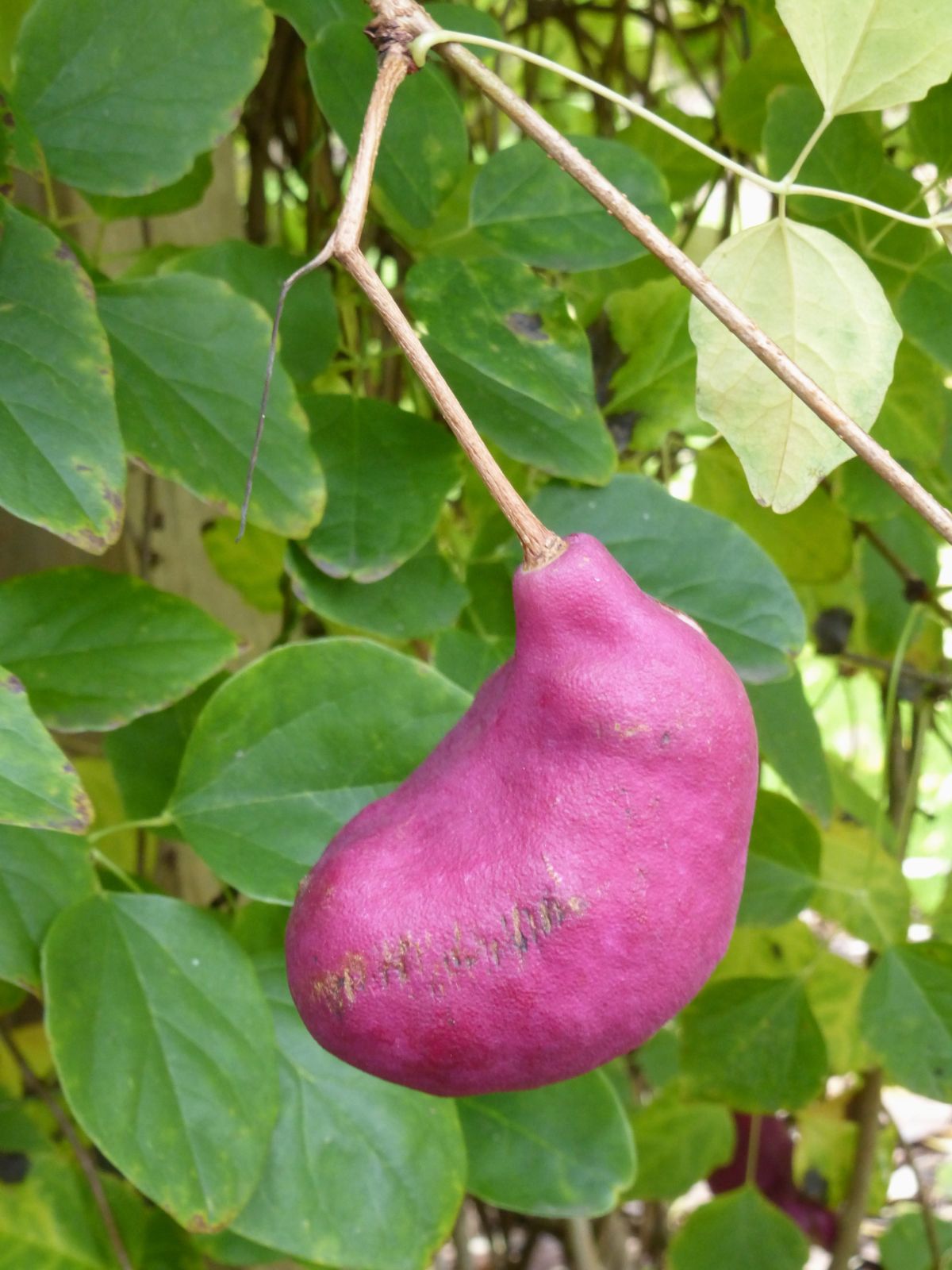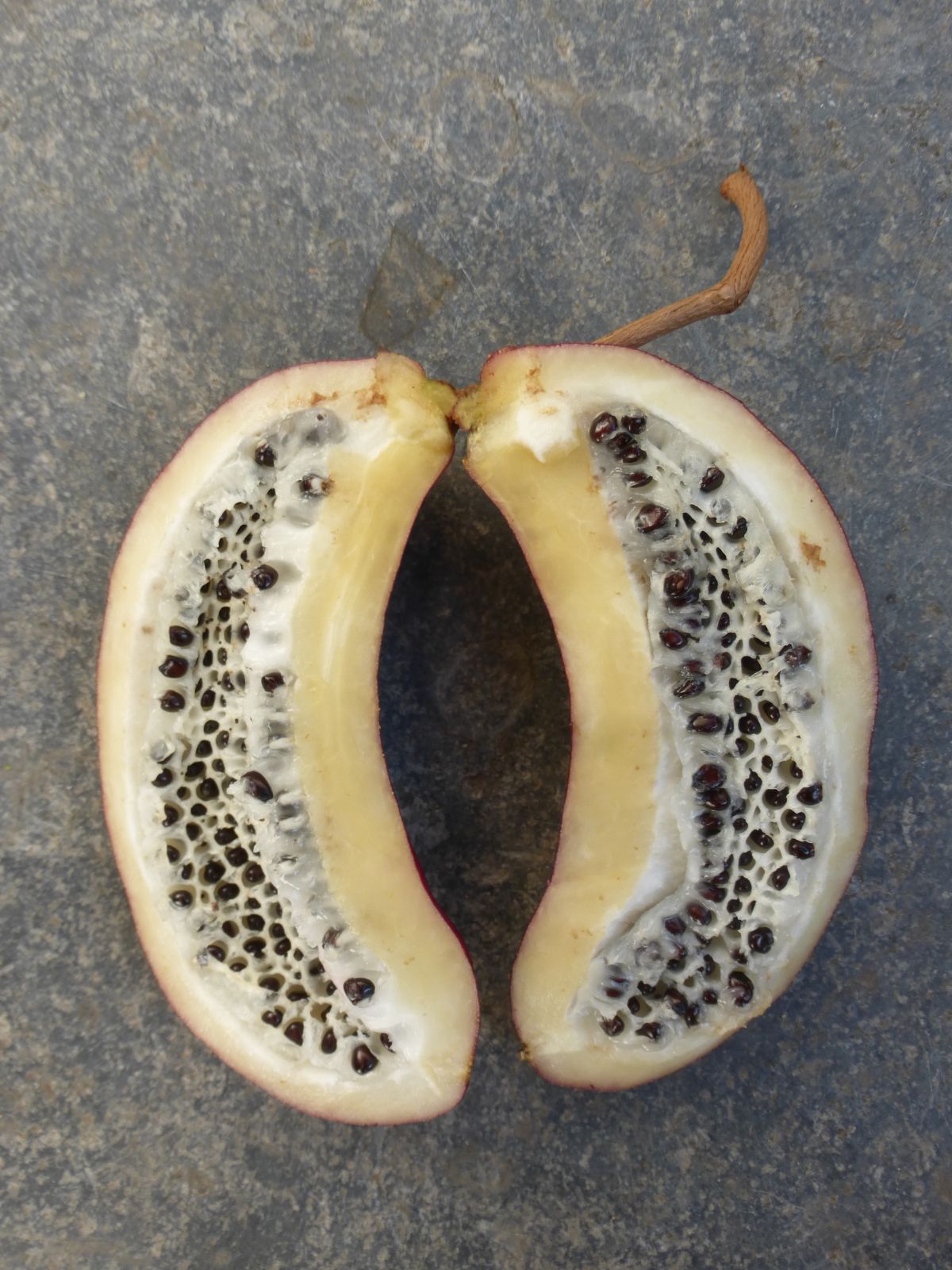Akebia trifoliata
Credits
Article from Bean's Trees and Shrubs Hardy in the British Isles
Recommended citation
'Akebia trifoliata' from the website Trees and Shrubs Online (treesandshrubsonline.
Genus
Synonyms
- Clematis trifoliata Thunb.
- A. lobata Decne.
A deciduous, twining shrub of vigorous habit. Leaves glabrous, composed of three stalked leaflets, the stalk of the terminal one thrice the length of those of the lateral ones. Leaflets broadly ovate, 11⁄2 to 4 in. long, the margins irregularly and shallowly lobed, the apex notched. Male and female flowers are borne on the same raceme, which is more or less pendulous and 3 to 5 in. long. Male flowers small, very numerous, 1⁄6 in. diameter, pale purple, and confined to the terminal part of the raceme. Female flowers basal and much larger, usually two in number, each about 3⁄4 in. in diameter, the three concave sepals being dark lurid purple. The fruit is at first sausage-shaped, 3 to 5 in. long and 11⁄2 to 21⁄2 in. wide, pale violet; but when ripe it splits open from the base, revealing rows of black seeds embedded in white pulp. Bot. Mag., t. 7485.
This remarkable and interesting climber was introduced to Kew in 1897, being a native of China and Japan. It has proved to be perfectly hardy and a luxuriant grower, but flowering as it does early in April, its blossoms are often destroyed by frost, and its remarkable and highly coloured fruits in consequence not often seen out-of-doors; but see the remarks under A. quinata.










